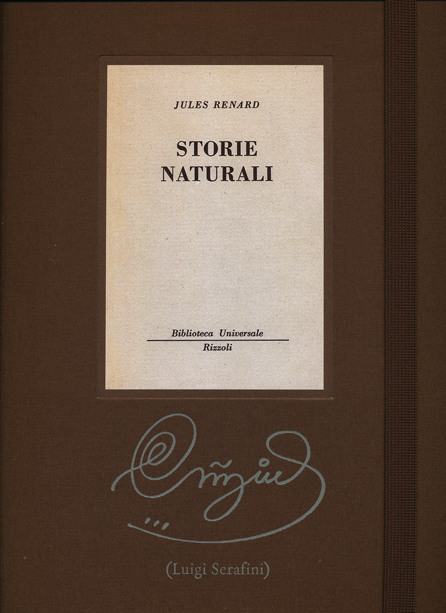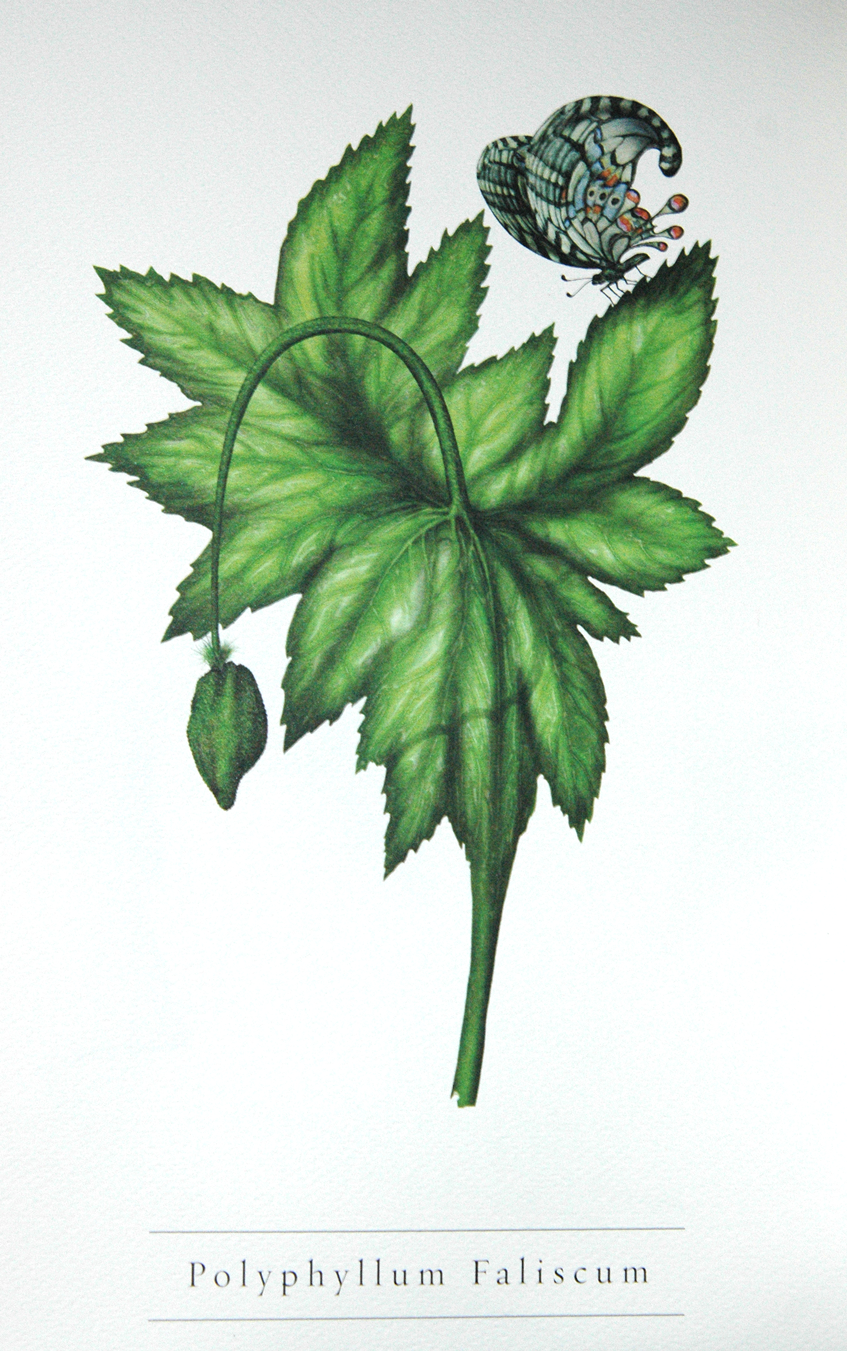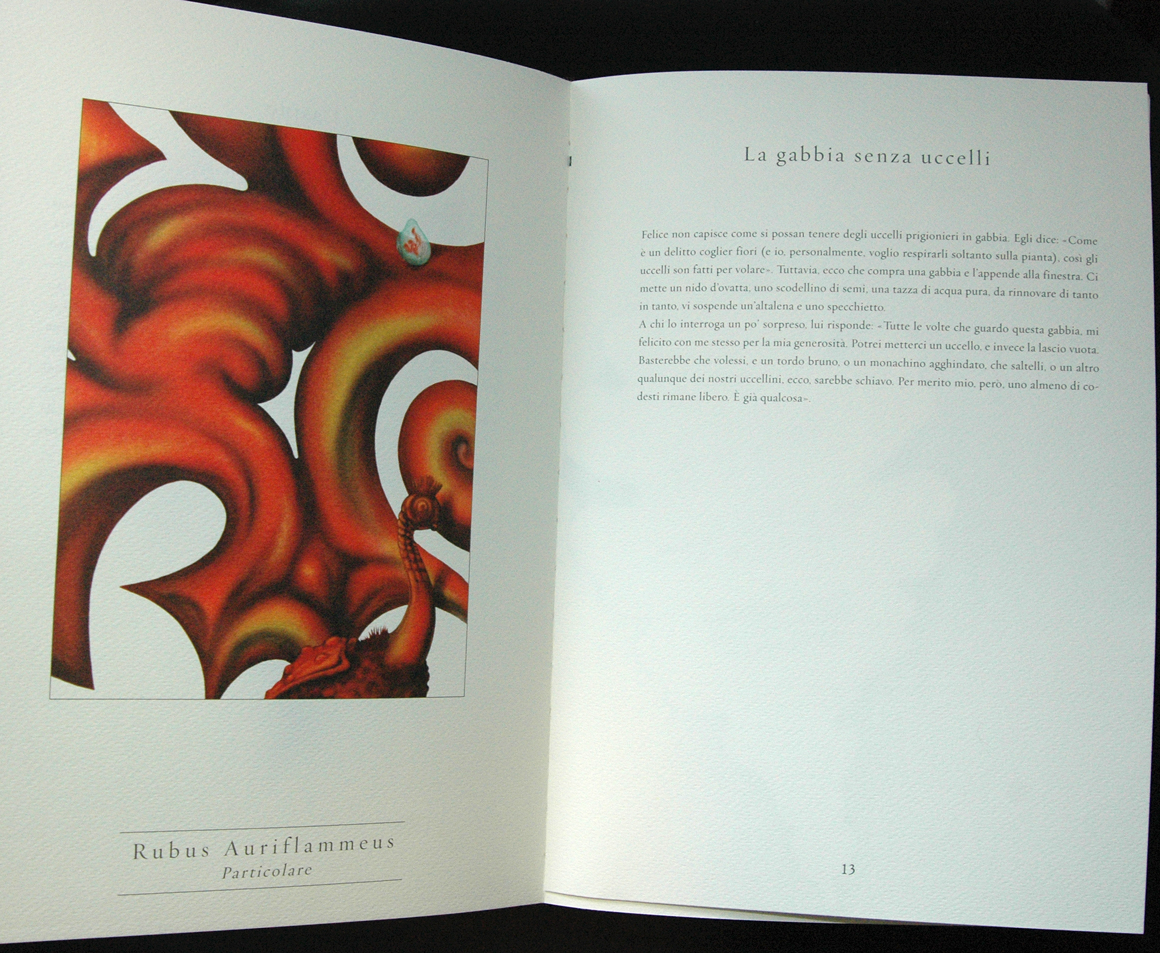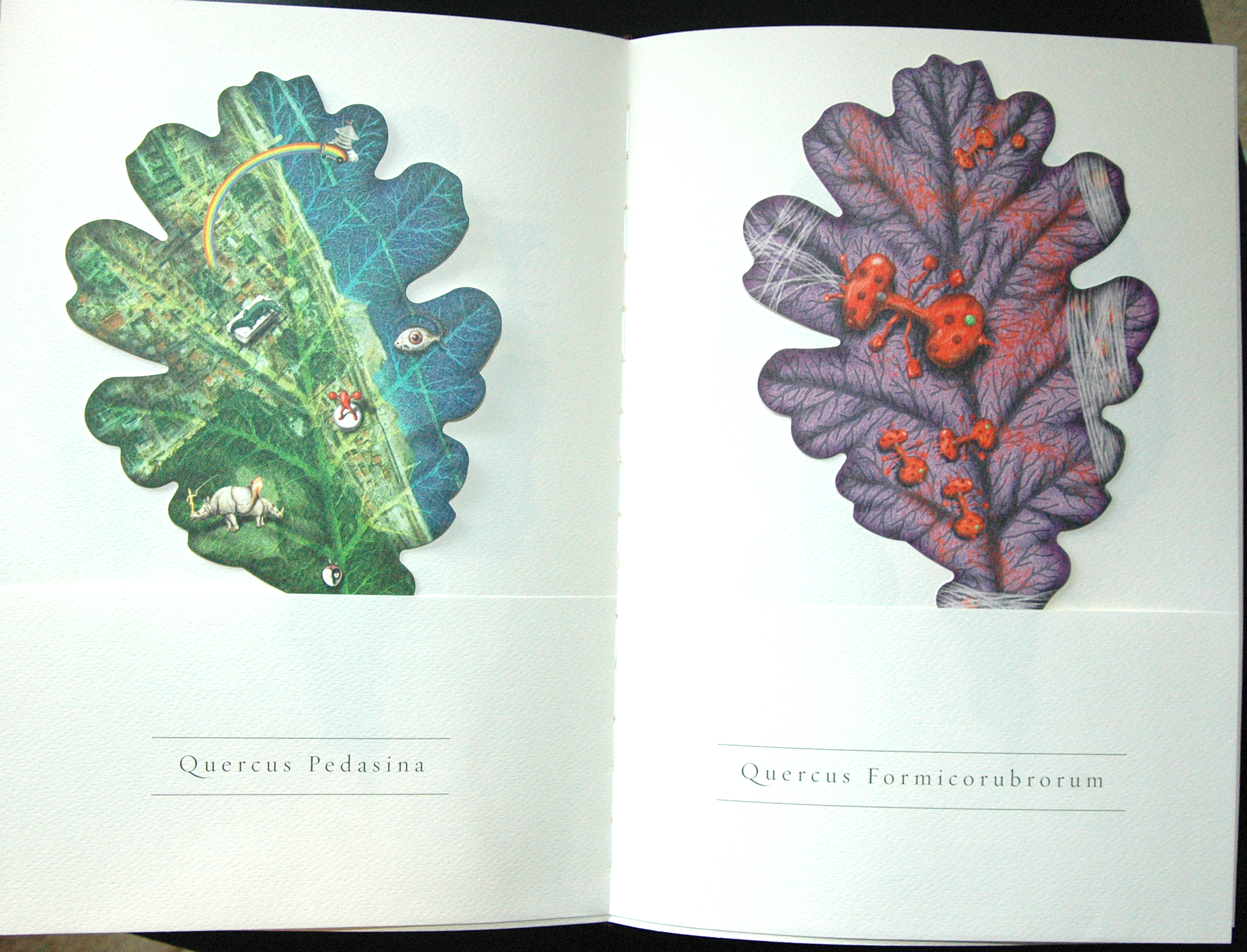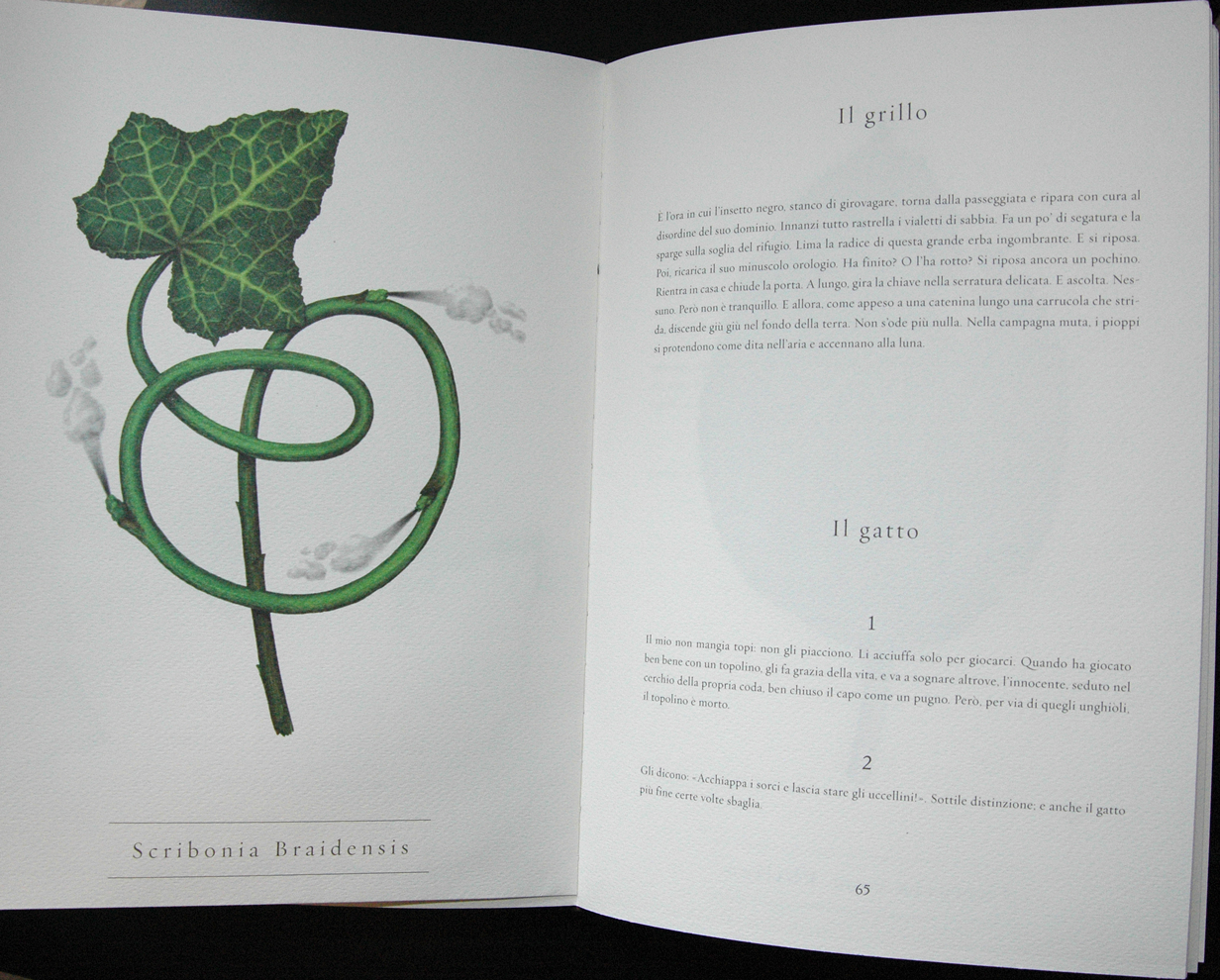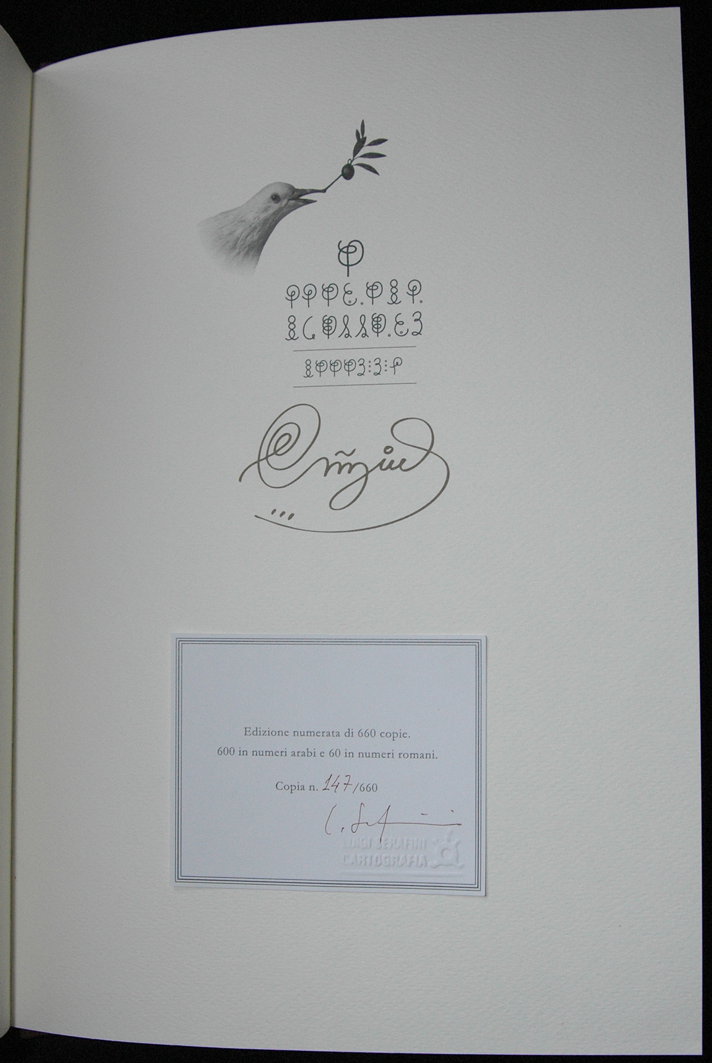Luigi Serafini
Luigi Serafini
“Storie Naturali” Signed Ltd Ed 147/660 - 2009
Luigi Serafini, author of the renowned and mysterious Codex Seraphinianus interprets the masterpiece of Jules Renard, Natural Histories, as an herbarium, in which imaginary plants illustrate Renard’s stories and bring to life the leaves of a botanical fantasy. As with the Codex, in time Storie Naturali is sure to be as rare and seductive a find, appreciated for its singular beauty and imagination, and equally appreciative in value.
Serafini’s work often involves the creation of parallel worlds. Whimsically humanizing the work of the French master has thus devised a new kind of invention, a whole fantastic botanical world whose leaves, printed as illustrations contained in pockets on each page that can be removed and more closely examined, form an enchanted forest of trees, animation and mutant plants—a celebration of the eternal vitality of natural history.
This large-format volume has a brown canvas cover on which is reproduced the original covers of Storie Naturali as published by BUR in 1959, with the lenticular image of a fox (in French: renard). The pages are of the highest quality paper, the lyrical text, in Italian, is from Renard’s original book. This fascinating book contains 20 pockets that contain the beautifully imagined herbarium leaves.
At 262 pages with pockets and inserts, Storie Naturali is a limited edition of 660 copies numbered and signed by the artist, of which this copy is #147. Published by Biblioteca Universale Rizzoli, Milan, in 2009.
Biography
Luigi Serafini (born on 4 August, 1949 in Rome, Italy) is an Italian artist, architect and designer. Graduated with a BA in Architecture at the Politecnico in Milan, Serafini started working as a designer, in cooperation with Gruppo Memphis, headed by architect Ettore Sottsass. He also worked for Italian television and several movie production companies, among them Federico Fellini’s La Voce della Luna, in addition to stage, light and costume designing for the great La Scala theater in Milan. He has created scenery, lighting and costumes for the ballet The Jazz Calendar by Frederick Ashton at Teatro alla Scala and worked also for the Piccolo Teatro di Milano.
Among his most significant works the renowned Codex Seraphinianus—an illustrated encyclopedia of imaginary vegetal and animal species in an undecipherable language—published in 1981 by Franco Maria Ricci and reprinted by Rizzoli in 2006 should be mentioned. The Codex Seraphinianus was originally released in a limited edition of 4,000 artfully-bound copies in 1981. It has been later republished on four occasions, first in a 1983 English language edition; then in English, Spanish and French editions in the 1990s, each again limited to 5,000 copies; and finally in a more widely printed 2006 edition. In 1984 he illustrated Pulcinellopedia (piccola) by P. Cetrulo (published by Longanesi), with a suite of pencil drawings focusing on the Neapolitan masque of Pulcinella. He also published collections of short stories for Bompiani, Archinto, Fandango and several magazines.
In 2003 he completed a polychrome bronze sculpture Carpe Diem and some bas-reliefs for one of the Naples subway stations (Mater Dei). In May 2007, he held an “ontological exhibition” Luna Pac at P.A.C. (the Pavilion of Contemporary Art) in Milan. In the same year the P.A.C. has paid homage to the artistic universe of Luigi Serafini by showing the 100 original plates of the Codex. Serafini has been a Banff Center visiting artist and has exhibited at the Fondazione Mudima in Milan, the XIII Quadriennale, the Galleria Nazionale d’Arte Moderna in Rome, the Futurarium and the Didael gallery. In July 2008 he completed a polychrome installation Balançoires sans Frontières (Altalene senza Frontiere) in Castasegna, Switzerland. In 2009 Serafini illustrated Storie Naturali, a reinterpretation of Histoires naturelles (Natural Histories) by Jules Renard, published by Rizzoli in a signed, limited edition of 660 copies.
Roland Barthes, Italo Calvino, Federico Fellini, Leonardo Sciascia, Giorgio Manganelli, Giorgio Soavi, Federico Zeri, Achille Bonito Oliva, Douglas Hofstadter, Philippe Decoufflé and Vittorio Sgarbi have engaged in the analisys of Serafini’s works. Calvino has epitomized the mechanisms and the rhetorical devices in his oeuvre: “…like in Ovidio’s Metamorphoses, Serafini believes in the contiguity and permeability of every territory of the existing: the anatomic and the mechanic elements exchange their morphologies, the human and the vegetal reigns find their mutual completeness…the wild and the metropolitan, the writing and the living.”
All Vintage Memorabilia autographs are unconditionally guaranteed to be genuine. This guarantee applies to refund of the purchase price, and is without time limit to the original purchaser. A written and signed Guarantee to that effect accompanies each item we sell.

